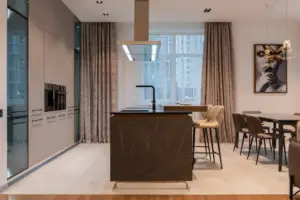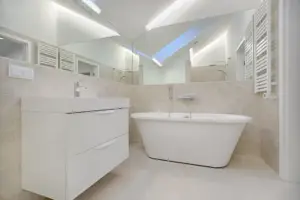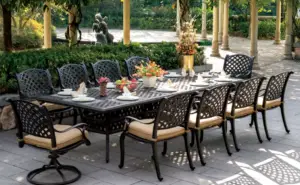By George House/27,Aug,2025
Homes are meant to feel bright, open, and welcoming. One design feature that achieves this effortlessly is floor-to-ceiling windows. They invite natural light, create a strong connection with the outdoors, and add elegance to any space. These large glass windows can change how your rooms look and feel.
Many homeowners choose them for their sleek design and timeless appeal. Adding panoramic windows is more than just an upgrade. You can say it’s an investment in light, space, and comfort that transforms how you experience your home.
The Appeal of Floor-to-Ceiling Windows
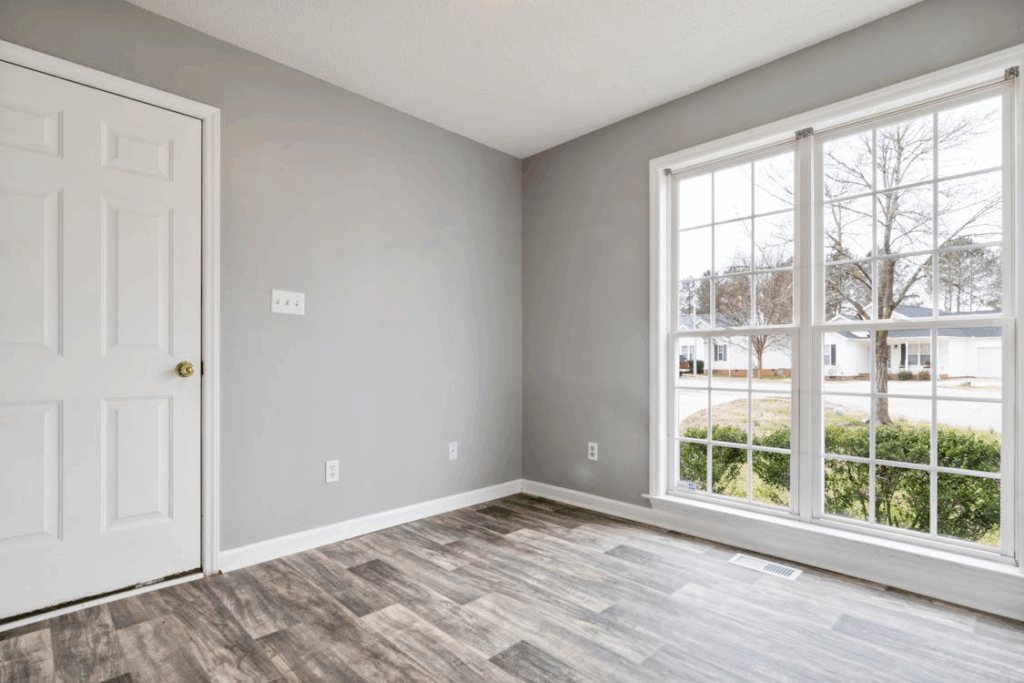
(Source)
A home speaks through its design, and windows often take center stage. Choosing floor-to-ceiling glass gives a property a sense of grandeur and openness that no other window style offers. Before exploring designs and features, it’s worth understanding why homeowners are drawn to these expansive windows.
Natural Light and Energy Efficiency
One of the biggest reasons homeowners prefer floor-to-ceiling windows is the flood of natural light they bring indoors. According to the U.S. Department of Energy, natural daylight can reduce the need for artificial lighting by up to 80% during daytime hours. Less reliance on lighting means lower utility bills.
Sunlight also helps regulate moods and improves sleep cycles, as noted by the National Institutes of Health. When paired with modern glazing, floor-to-ceiling glass improves insulation, reducing heating and cooling costs. These windows combine visual appeal with real functional benefits for everyday living.
Seamless Indoor-Outdoor Connection
A major appeal of panoramic windows is the way they erase boundaries between indoor and outdoor spaces. These windows let you enjoy your garden, skyline, or backyard without stepping outside. They also make rooms appear larger by extending the visual line into the outdoors.
With large glass windows, living rooms, bedrooms, and kitchens all gain a sense of openness. The connection with nature improves overall comfort, creating a home that feels more spacious and inviting.
Boosting Property Value
Installing floor-to-ceiling windows often increases a property’s market appeal. Buyers often view large glass windows as a premium upgrade, much like hardwood flooring or custom kitchens. These installations make spaces look more modern and high-end, which adds to the overall value.
For homeowners planning to sell, the return on investment can be significant. Even if selling isn’t the goal, these windows improve everyday living while building long-term financial gain. Few design features achieve such a balance of style and value.
Design Options for Floor-to-Ceiling Windows
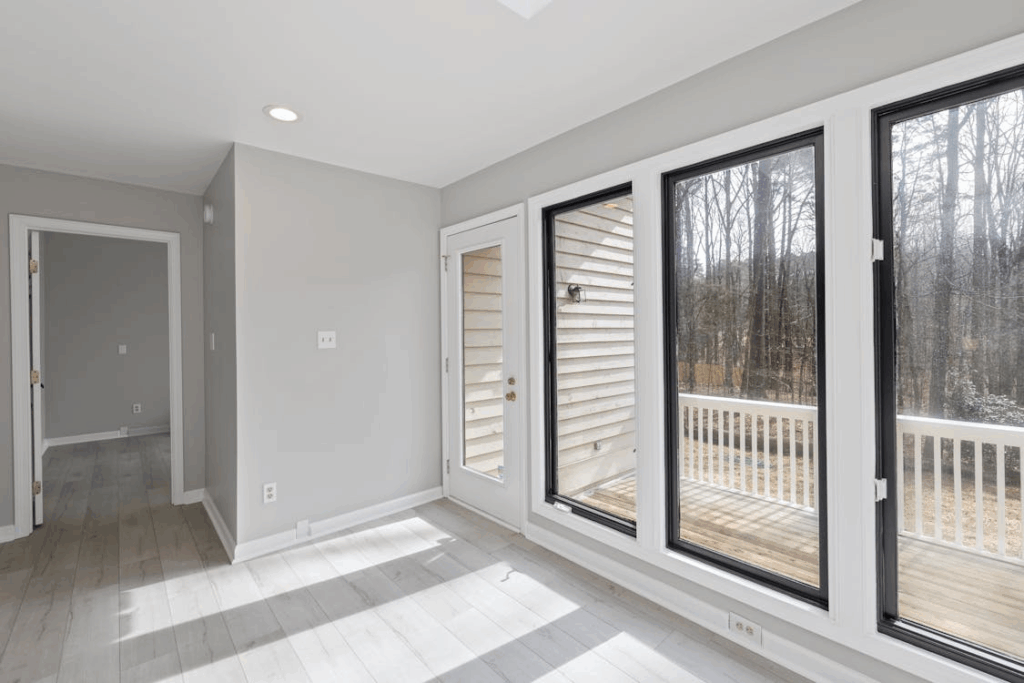
(Source)
Designing with floor-to-ceiling glass allows a homeowner to mix creativity with practicality. Every house has unique needs, but these windows adapt beautifully to different styles. Before diving into specific ideas, let’s look at the variety of options that homeowners can choose from.
Sliding Glass Walls
Sliding systems are among the most popular choices for floor-to-ceiling windows. They allow entire walls to open, connecting living rooms directly to patios or decks. This means style and efficiency go hand in hand.
Floor-to-ceiling glass sliding panels are especially loved in warmer climates, where open-air living is common. They combine flexibility with elegance, offering the ability to enjoy fresh air or close the panels for comfort. This design blends lifestyle and function seamlessly.
Curved Panoramic Glass
A bold option for homeowners is curved panoramic windows. These designs create a sweeping view that adds drama and sophistication to any space. A curved wall of large glass windows becomes a focal point, perfect for spaces overlooking landscapes or city skylines.
They bring in light from multiple angles, reducing the need for artificial lighting. Though often seen in high-end projects, curved glass designs are gradually becoming more accessible, allowing more homeowners to enjoy their beauty and benefits.
Multi-Panel Glass Walls
Another exciting option is the multi-panel setup for floor-to-ceiling glass. Panels can be folded, stacked, or slid away, offering flexibility in design. These large glass windows allow for versatile openings that range from partial to fully open.
Homeowners can adapt based on weather or personal preference. The customizable layout makes them suitable for both large living areas and smaller spaces. Multi-panel walls offer a balance of practicality and beauty for everyday living.
Practical Considerations Before Installation
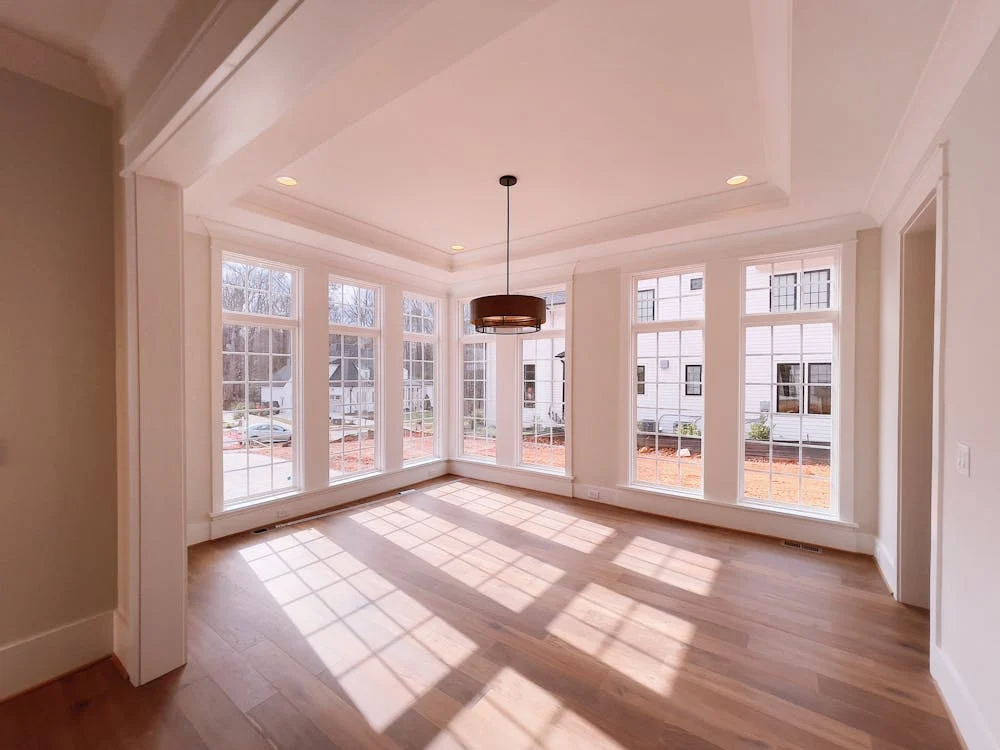
(Source)
While floor-to-ceiling windows are beautiful, they also require careful thought before installation. From budget to privacy, every detail matters. Homeowners should review practical aspects before deciding. Let’s explore the most important points that guide smart decision-making.
Privacy and Window Treatments
Large glass windows can sometimes feel too open. Privacy solutions help balance the openness without losing natural light. Window treatments like blinds, curtains, or smart glass provide flexibility. You can control how much visibility you allow without blocking sunlight.
With floor-to-ceiling glass, layering sheer and blackout options works well, especially in bedrooms. These solutions give you privacy while still enjoying daylight and views. Considering treatments before installation ensures both beauty and practicality in daily living.
Budget and Installation Costs
Adding modern floor-to-ceiling windows can vary widely in price. Factors like size, design, and materials impact total floor-to-ceiling window costs. Professional installation is critical, as poorly fitted windows reduce energy efficiency.
Investing in durable panoramic windows may seem expensive at first, but the return over time through reduced bills and higher resale value makes it worthwhile. Homeowners should review quotes carefully and plan budgets with both short-term and long-term benefits in mind.
Climate and Maintenance
Your local climate influences how floor-to-ceiling glass performs. In colder areas, double or triple glazing prevents heat loss. In warmer areas, low-emissivity coatings help keep interiors cool. Large glass windows need regular cleaning to stay clear and bright.
However, many modern glass types now feature coatings that resist dirt and water spots, reducing cleaning frequency. Factoring in climate and upkeep helps homeowners make choices that last longer and perform better over time.
Safety and Building Codes
Before installing floor-to-ceiling windows, safety requirements and local building codes must be addressed. Many regions require tempered or laminated glass for windows reaching the floor, as this reduces injury risk.
In areas prone to storms or earthquakes, reinforced frames and impact-resistant glazing may also be mandatory. These safeguards protect both the home and its occupants. By confirming compliance with building codes, homeowners ensure that their large glass windows not only look stunning but are also safe and reliable.
Conclusion
Floor-to-ceiling windows transform homes with light, space, and elegance. They enhance daily living, improve energy efficiency, and add property value. Choosing the right design ensures long-lasting beauty and function.
George Group delivers expert guidance and installation for these windows, helping homeowners create bright and inviting living spaces with confidence.

